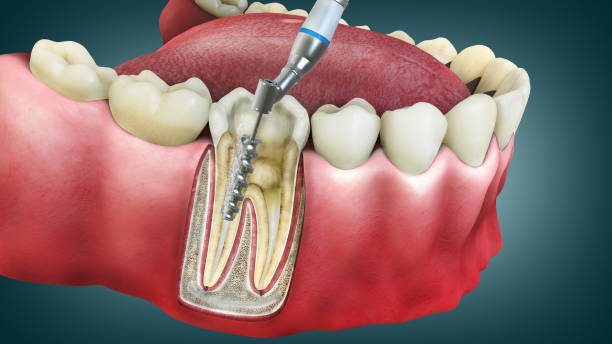Understanding Root Canal Treatment: A Comprehensive Guide

Strong 8k brings an ultra-HD IPTV experience to your living room and your pocket.
Root canal treatment, often perceived with apprehension, is a routine dental procedure that can save a tooth suffering from severe decay or infection. Thanks to advancements in dental technology, the process has become more efficient and less painful than ever before. This blog will delve into what root canal treatment entails, why it's necessary, and what to expect before, during, and after the procedure.
What is Root Canal Treatment?
Root canal treatment, also known as endodontic therapy, addresses problems within the tooth's pulp—a soft tissue consisting of nerves, blood vessels, and connective tissue. When this pulp becomes infected or inflamed, usually due to deep decay, repeated dental procedures, or trauma, it can lead to severe pain and abscess formation. If left untreated, the infection can spread, resulting in tooth loss and other serious health issues.
Symptoms Indicating the Need for a Root Canal
Several symptoms may suggest that you need a root canal:
Severe Toothache: Persistent pain, especially when chewing or applying pressure.
Prolonged Sensitivity: Sensitivity to hot or cold temperatures that lingers after the stimulus is removed.
Discoloration: Darkening of the tooth, indicating possible nerve damage.
Swelling and Tenderness: Swelling and tenderness in the nearby gums.
Pimple on the Gums: A recurring or persistent pimple on the gums, indicating an abscess.
If you experience any of these symptoms, it’s essential to see a dentist promptly for an evaluation.
The Root Canal Procedure
Examination and Diagnosis: The dentist starts with a thorough examination, often including X-rays, to assess the extent of the damage and understand the shape of the root canals. This step is crucial for planning the treatment.
Anesthesia and Preparation: Local anesthesia is administered to numb the affected area, ensuring the procedure is pain-free. A rubber dam is typically placed around the tooth to keep it dry and free of saliva during the procedure.
Accessing the Pulp: The dentist makes an opening in the crown of the tooth to access the infected or inflamed pulp. Specialized instruments are used to remove the pulp from the pulp chamber and root canals.
Cleaning and Shaping: After the pulp is removed, the root canals are cleaned, disinfected, and shaped to prepare for the filling. This step is vital to eliminate bacteria and prevent further infection.
Filling the Root Canals: The cleaned and shaped canals are filled with a biocompatible material, usually gutta-percha. This rubber-like material is inserted with an adhesive cement to ensure a complete seal of the root canals.
Restoration: After the root canal treatment, the tooth will need a crown or other restoration to protect and restore it to full function. Until the crown or restoration is completed, it’s advisable to avoid chewing on the treated tooth.
Post-Treatment Care
After a root canal, some discomfort or mild pain is normal for a few days. Over-the-counter pain relievers are usually sufficient to manage this. Here are some tips for post-treatment care:
Maintain Oral Hygiene: Continue brushing and flossing regularly to keep the area clean.
Avoid Hard Foods: Avoid chewing on the treated tooth until it is fully restored with a crown.
Follow-Up Visits: Attend all follow-up appointments to ensure proper healing and restoration.
Benefits of Root Canal Treatment
Root canal treatment offers several significant benefits:
Pain Relief: It alleviates the severe pain caused by an infected or inflamed pulp.
Tooth Preservation: It saves the natural tooth, preventing the need for extraction and subsequent procedures like dental implants or bridges.
Restored Functionality: After the procedure and proper restoration, the tooth can function normally, allowing for effective chewing and maintaining the integrity of the dental arch.
Addressing Common Myths
Many misconceptions surround root canal treatment:
Myth: Root Canals Are Painful: With modern anesthesia and techniques, most patients report that the procedure is no more uncomfortable than having a cavity filled.
Myth: Root Canal-Treated Teeth Are Prone to Future Infection: Properly treated and restored teeth can last a lifetime with good oral hygiene and regular dental check-ups.
Conclusion
Root canal treatment is a valuable procedure that can save your natural teeth and prevent the complications associated with tooth loss. Understanding the process and its benefits can alleviate anxiety and encourage patients to seek timely treatment. If you experience any symptoms indicating the need for a root canal, consult your dentist promptly to ensure the best possible outcome for your oral health.
In conclusion, modern root canal treatment is a safe and effective way to treat tooth infections and save your natural teeth. By understanding the procedure and debunking common myths, you can approach this treatment with confidence and take the necessary steps to maintain your oral health.
Note: IndiBlogHub features both user-submitted and editorial content. We do not verify third-party contributions. Read our Disclaimer and Privacy Policyfor details.


